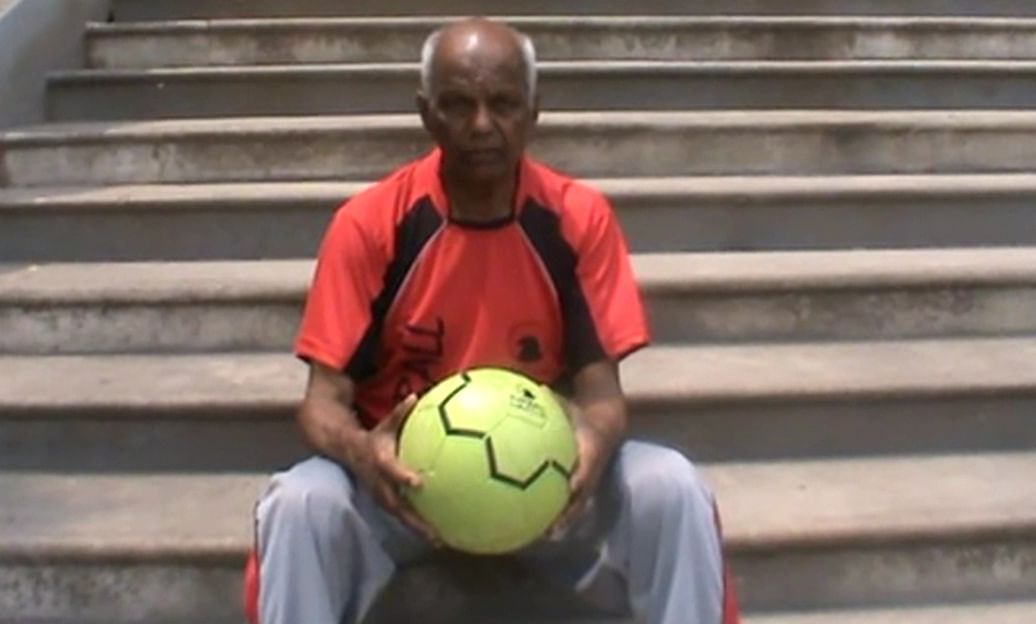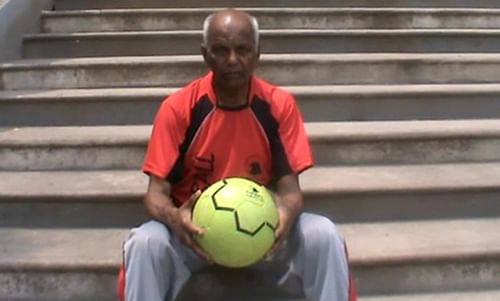
Tulsidas Balaram - The tormented genius of Indian football

Tulsidas Balaraman
On 4th October this year, in a small flat in Uttarpara (outskirts of Kolkata), a physically fit but cynical old man woke up to celebrate his 76th birthday.
A bachelor, he stays alone, has no immediate family and so his birthday was like most other days in his life, solitary and repetitive. He read the newspapers, went for a walk, did some free hand exercises, supervised the cooking of his meals, watched TV and chatted with his neighbours.
Time and tide awaits no man and memories fade with each passing year. But Indian football fans, especially East Bengal’s supporters should never forget the 4th October, birthday of this old man in Uttarpara.
On this day, arguably the greatest Indian forward of all time, the legendary but now tormented, cynical and angry old man of Indian football, Tulsidas Balaraman, popularly known as Balaram was born. At his peak, from 1956—62, he was not only India’s but one of Asia’s finest forwards.
He was born in a small village Ammuguda, in Bolarum in Secunderabad and learnt his football in nearby playfields. It is often said that if Balaram had a more nutritious diet in his formative years, and if his career had not been halted due to a diagnosis of pleurisy in 1963, he would have been spoken of in the same breath as Park Ji Seung, Shinji Kagawa, Hidetoshi Nakata and such Asian greats who have plied their trade in the English Premier League and other noted European leagues.
Balaram defied his father’s wishes to constantly play football in his adolescence. But he was born in a family of humble origins, and as Balaram often recalled, that even after intensive practice there were days when he went to sleep hungry in the night.
In his youth, he idolized the crafty inside forward Sussay (Jr.) of Hyderabad City Police, but in terms of achievement, surpassed his childhood hero. Balaram was born in a region which produced many talented players. Internationals inside forward B. Narayan and striker D. Kannan also emerged from this area at the same time.
Like many Indian sportspersons, he was discovered more by accident than design. Legendary coach S.A Rahim saw him play in a local tournament and realized he had immense potential.
Rahim invited the precocious 18-year-old Balaram to attend trials for the Santosh trophy, held that year at Ernakulam. Balaram was hesitant as he lacked the finance to travel daily from Secunderabad to Hyderabad. The late Rahim, an astute psychologist, sensed financial difficulties. So he gave Balaram the sum of one rupee and 25 paise daily to hire a bicycle and attend the trials.
That is how an Indian football legend was born.
Figures do not do justice to Balaram’s genius and charisma. Overall, he was capped just 26 times and scored 8 goals for India. Yet, he is considered one of all time greats. Why? Because of his ability on the field.
His ball control and pace was exceptional, distribution impeccable and his capacity for unexpected invention phenomenal. Above all, he had the knack of scoring crucial goals.
Those who saw him at his prime remain lifelong admirers. He also played for the country in the golden period of Indian football – 1956-62, when India finished fourth in the 1956 Melbourne Olympics, won the 1962 Asian Games gold medal and were unbeaten runners up in the 1959 Merdeka tournament.
He first played for India on 4th December 1956 in the Melbourne Olympics semi finals against Yugoslavia and for the next six years, was always first choice in any Indian team.
He started his club career with City College Old Boys Hyderabad in 1955 and shifted to East Bengal in 1957. For five years, he was like a demi God for East Bengal’s legions of supporters, who loved him for his commitment.
The loyalty he inspired is unsurpassed. As a token of gratitude, some fans would take turns to accompany him when he went for the national camps and wash his clothes and run daily errands for him.
Balaram opted to stay on in Kolkata after retirement and has limited contact not only with family members back home, but also the Indian football fraternity.